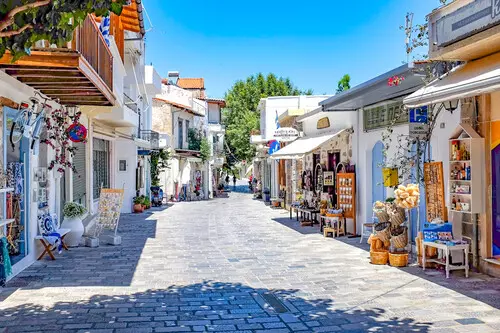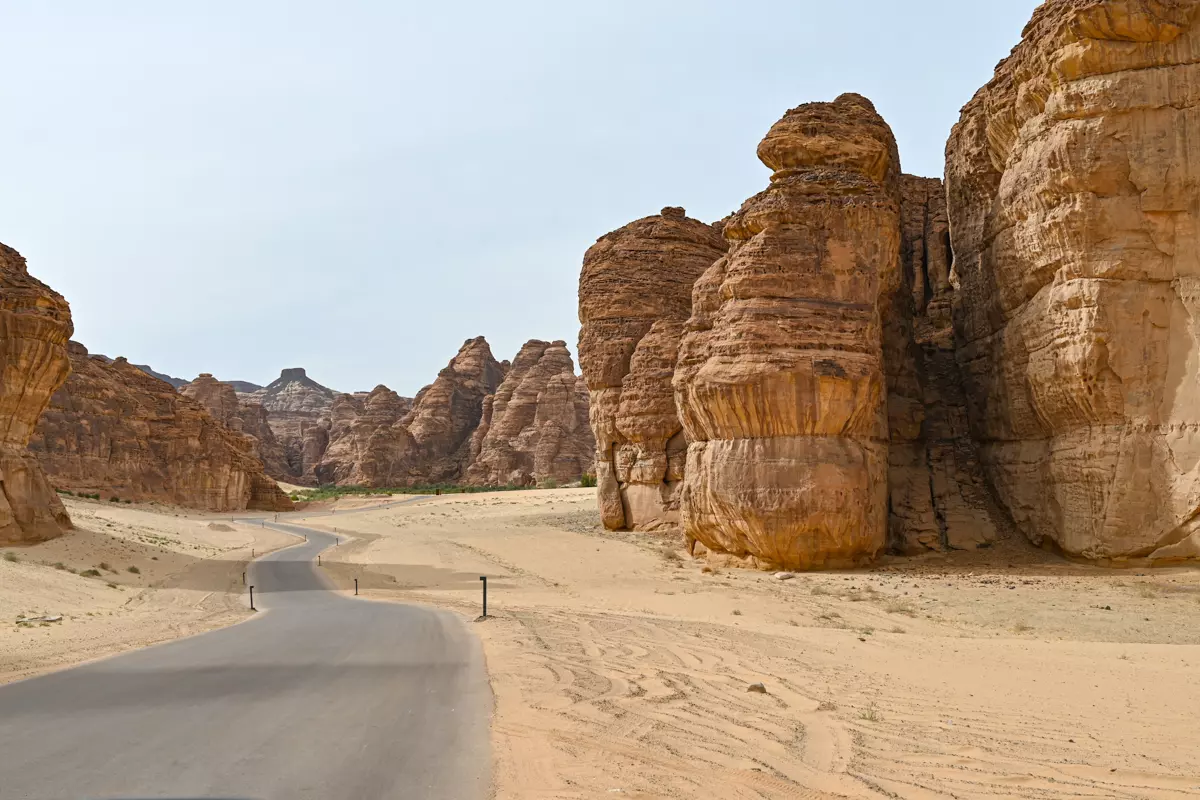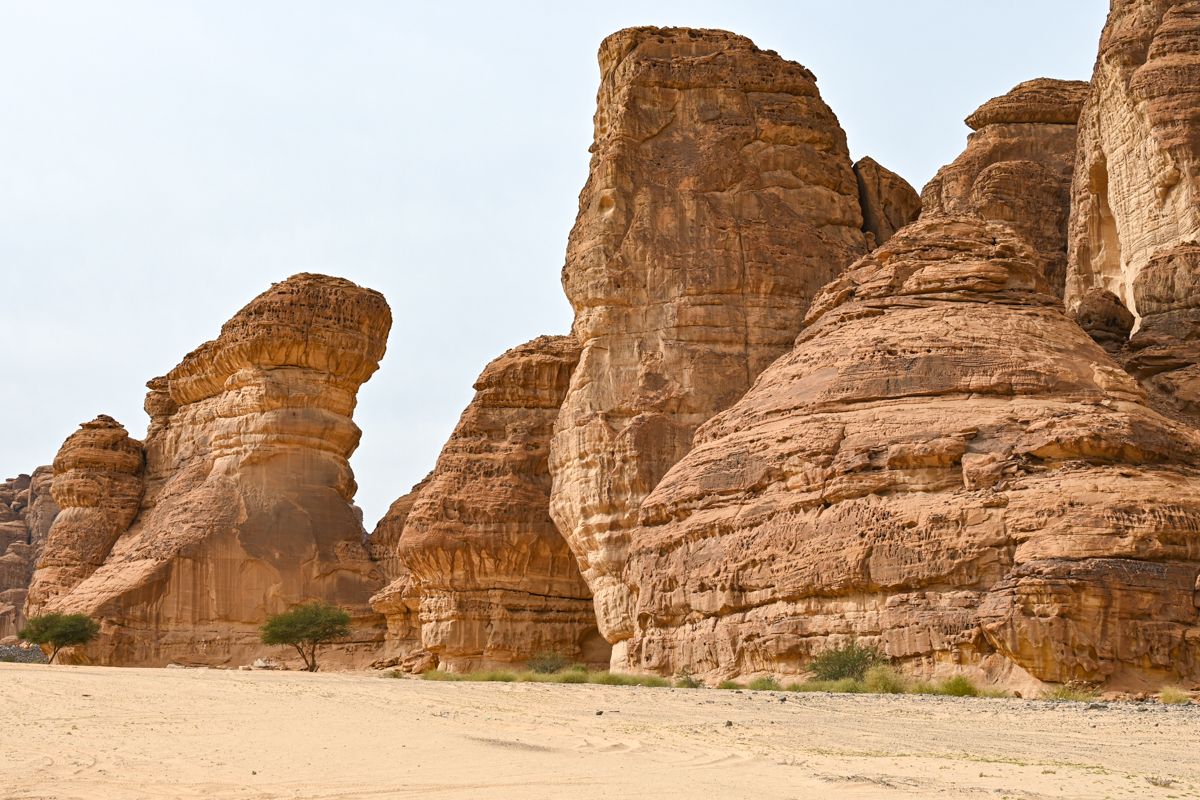Al-Balad, Jeddah – Old Town (Top Places & Tips)
Al-Balad is the historical area of Jeddah that dates back to the 7th century. Although I have visited many countries around the world, in my opinion, this UNESCO World Heritage Site is one of the most beautiful surviving ancient quarters in the Middle East. Al-Balad once served as the main gateway to Mecca and was the primary place for piligrims to stay before setting out for the Muslim holy city.
Today, this historic part of the city of Jeddah is like an open-air museum, full of unique and interesting buildings. The traditional Al-Balad houses are built of coral stone and are a fine representation of Hejazi architecture, with their intricate teak rawashin covering the windows and balconies.
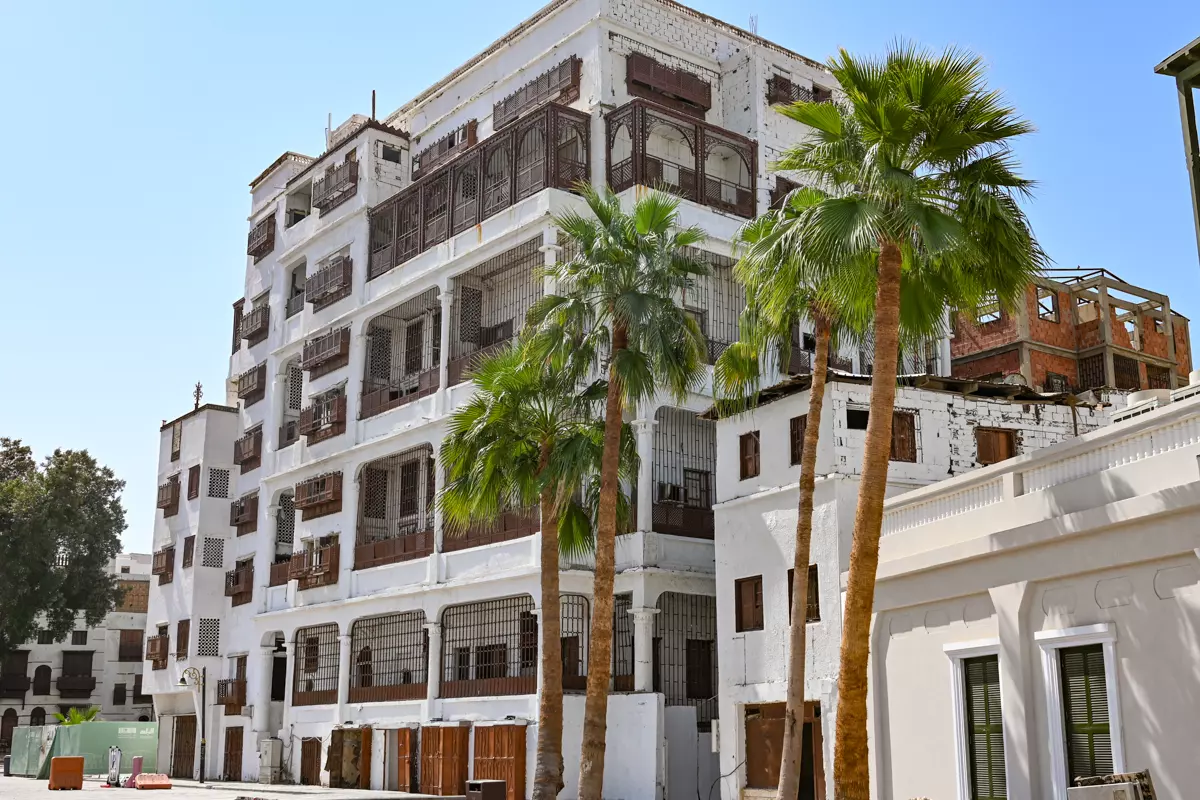
As you walk through the narrow, dusty streets, take in the centuries-old buildings, each of which tells its own story. Pay special attention to the rawashin – the projected wooden screens on the façades of the buildings. These beautifully decorated, balcony-like bay windows expand the living space beyond the actual area of the house. They provide ventilation, offering coolness during the hot summer months. In addition, rawashin offers privacy, which is especially valued among women in Islam. These architectural features allow those inside to see what is happening outside, while outsiders cannot see anything happening inside.
After the trip, I put together a guide for you with a list of the top places to see in Al-Balad, along with some useful tips to help you plan your visit.
Things To Do In Al-Balad
Bab Jadid
The Old Jeddah Gate, also known as Bab Jadid, is one of the eight main gates of the old wall surrounding Jeddah’s old town.
This is where I would recommend that you start your walk through the historical part of Jeddah, Al-Balad. Since Bab Jadid is located right next to the main road, the easiest way to find it is with Google Maps. It will also be convenient for taxi drivers to stop and drop you off at the gate.
Nassif House Museum

Built in 1880, the Nassif House Museum is a symbol of Jeddah’s rich past and one of the most important examples of traditional Arab architecture. Purchased by the Saudi government in 1975, it became a historical monument and cultural center. The seven-story building, with 106 rooms, once served as the royal residence of Ibn Saud, the first king of Saudi Arabia.
The museum showcases the lifestyle of Jeddah’s wealthy merchant families from the late 19th to early 20th century. Visitors can explore collections of antique furniture, textiles, ceramics, and household items, as well as jewelry and photographs. The building’s impressive Arabic calligraphy, carved wooden doors, and bay windows also draw attention.
One unique feature is the large tree beside the museum, believed to be the oldest in Jeddah, grown despite the town’s water scarcity.
Accommodation: Here are all your hotel options in Jeddah.
Al-Saidi Bakery
Located in the heart of Al-Balad, Al-Saidi Bakery is a place that always draws people in with the smell of fresh bread. Almost a hundred years old, the bakery makes various types of bread according to the old traditions.
This is a place where you can watch them take freshly baked bread out of the brick oven by hand. There’s something captivating about the simplicity of the process. No machines, just fire, dough, and skilled hands honed by generations of practice.
Be sure to get some classic Saudi khubz bread or the popular shaboura rusks. The khubz is usually still warm and soft, while the shaboura is crisp and easy to take home or enjoy with tea.
Tip: Al-Saidi isn’t always open at fixed hours, so it’s best to come early. Plus, it’s just around the corner from the Nassif House Museum, making it a perfect stop before or after your visit there.
Al-Shafi’i Mosque
One of the places that you have to visit while walking around Al-Balad, Jeddah is the Al-Shafi’i Mosque. Believed to be over 1,400 years old, it is the oldest house of worship in the city. Al-Shafi’i Mosque is one of the most important and beautiful historical places in Jeddah. The building is in good condition, and was renovated in 2009, with great efforts made to preserve as many original details as possible.
The mosque is built mainly of coral limestone and wood. It consists of a hypostyle hall supported by columns and an inner courtyard paved with white marble slabs, flanked on four sides by arcades. The mosque has four entrances, plus a small entrance for women at the back. The door of the main entrance on the southern side is beautifully decorated.
At the front of the mosque is the main prayer hall. The marble pillars date back to the early Islamic era and are believed to have been brought to Jeddah by traders from Ethiopia. In the southwest corner of the mosque stands an impressive minaret, which is approximately 800 years old.
Matbouli House Museum

The Matbouli House Museum is a privately-owned property located on Al-Qossani Alley in the Al-Balad District of Jeddah. For more than 400 years, this four-story building belonged to a family of spice merchants. This is one of the most authentic houses in Al-Balad, so if you want to learn more about the lifestyle of Jeddah residents, visiting it is a must.
Matbouli House has two entrances, and the front features beautiful decorated rawashin, which reflect the traditional spirit of the city of Jeddah. Inside the house, you will find various pieces of antique furniture and old gramophones. A variety of tools and pottery are also on display that will give you some insight into the traditional way of life of the Arabs of old.
Sharbatly House
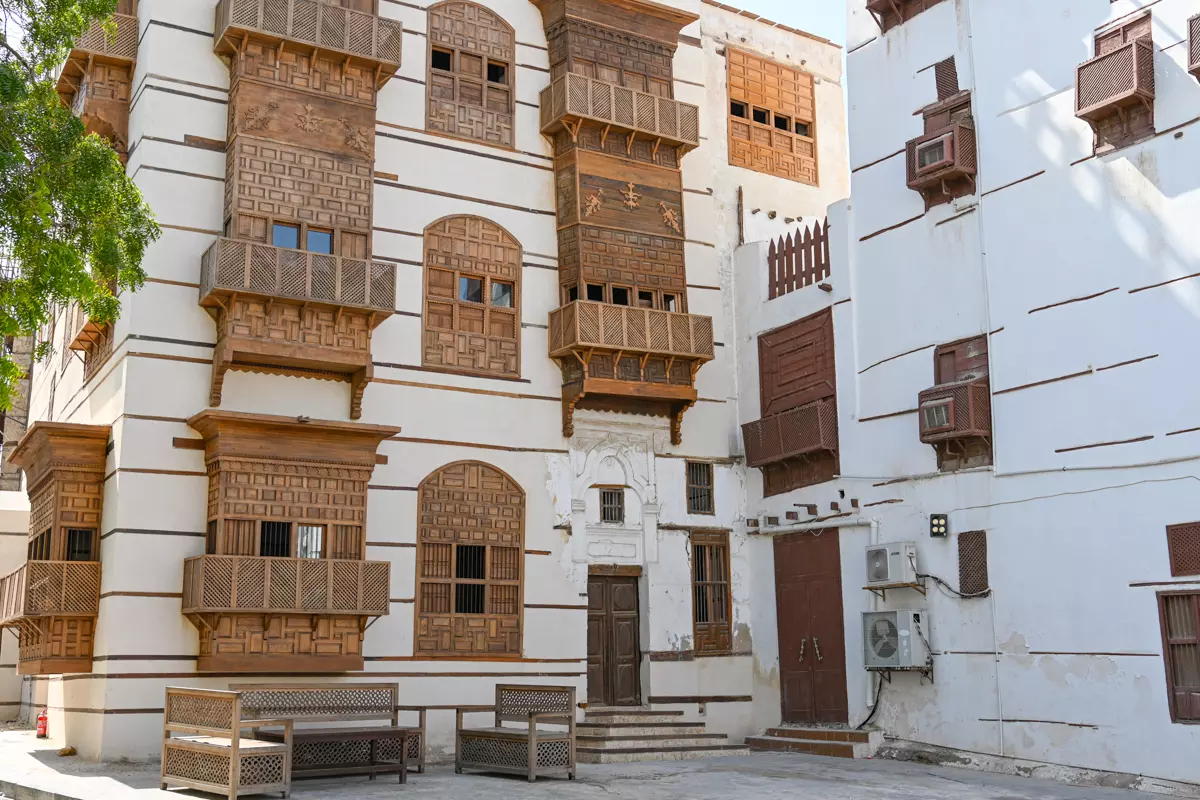
This four-story house is considered to be one of the most beautiful in Al-Balad due to its stunning Hijazi-style balconies. It was the home of the wealthy Sharbatly family, who made their fortune importing fruits and vegetables from around the world. The building once served as the headquarters of the Egyptian Embassy.
Today, after being restored numerous times, the building houses a cultural center that regularly organizes various events and exhibitions. You can also go up to the roof terrace and admire Al-Balad from above.
Souq Al-Alawi

Souq Al-Alawi, the famous Al-Balad market that runs along Dahab Street, is one of the largest in the Kingdom of Saudi Arabia. Textiles decorated with traditional ornaments, spices, nuts, Arabic lamps, antique furniture and home decor, souvenirs, leather goods, pottery – you can find it all at this souq. The mild chaos and commotion are part of the experience, and your head will spin from all the colors and smells.
Also try some dates, spices, Arabic coffee beans, and fresh fruits and vegetables while walking around the place. The atmosphere is mesmerizing, and if you’re going to buy something – don’t forget to haggle. It’s like a game where you have to remember one fundamental rule: never show too much interest in the product.
Taste The Local Dishes
In addition to relaxing in luxury and learning about historical Al-Balad, Jeddah is also a place where you can enjoy some fabulous food. Poultry, beef, veal, and goat dishes are popular in Saudi cuisine, as are fish and seafood. On the seaside, like in Jeddah, seafood and fish are dominant.
Al-Balad is full of traditional cafes hidden in narrow streets that serve local dishes such as kibbeh, shish tawook, and sharwama. The country’s typical cuisine is a wonderful combination of Egyptian, Yemeni, Indian, and Lebanese dishes, and you can taste different flavors at restaurants such as Albasali Seafood or Chef’s Garage.
Buy Authentic Souvenirs
People always like to get souvenirs that remind them of distant countries that their loved ones have visited. If you want to surprise your friends, family, or colleagues with something nice, buy souvenirs at any of the souqs in Al-Balad, Jeddah.
This is no easy task, but looking for souvenirs can be a fun adventure that you will remember for a long time after returning home. Even small gifts like a cute mug or magnet will strengthen your friendship, and remind your loved ones of you long after your trip.
Arab merchants are very sociable and open people. They joke a lot and always smile, and they can spend hours explaining what makes their goods special. At the markets, you can find Arabic perfumes, exotic spices, dates, beautiful lanterns, and colorful scarves.
Bab Makkah Souq

Located on the outskirts of Al-Balad, Bab Makkah Souq is one of the busiest marketplaces in Jeddah. The open-air market sells everything from everyday household items to cosmetics. At the market, you’ll find perfumes, various food products, exotic Middle Eastern spices, dates, nuts, and rare souvenirs for a very attractive price.
This is one of the top points of interest in Al-Balad, and walking around it, felt like I had been transported back in time to Jeddah’s rich past. The market is located near the Makkah Gate – one of the seven gates you can find in Al-Balad.
Historic Nights Rooftop Cafe
Your stroll through the old streets of Al-Balad won’t be complete without a visit to the Historic Nights Rooftop Cafe. Coffee is a big part of Saudi Arabian culture, so it’s no wonder that cafes like Historic Nights Rooftop and the many others nearby have become so popular recently. This is a place where you can have a coffee while also becoming more familiar with the culture and traditions of Saudi Arabia.
The owner is an antiques collector and has about 450 different items related to Saudi Arabia on display. The cafe has both traditional Arabic seating and modern chairs. You can sit inside and enjoy the air conditioning, or on the outdoor terrace looking at the surrounding buildings of Al-Balad. For the best views, make your way up to the rooftop — it offers a stunning look at Al-Balad’s surroundings.
Salloum House

Salloum House is a four-story building that covers an area of nearly 500 square meters and – like many buildings in the old town – is built in the traditional Hijazi style. The building was recently restored and turned into a museum that quickly became popular with locals and tourists alike.
All of the old furniture and items were preserved, making it one of the most authentic places in Al-Balad, Jeddah. Here, you can see an impressively decorated majlis (sitting room), an old iron, and a kerosene-powered refrigerator. There is also a gramophone, a women’s living area, and a room for receiving neighbors and friends. Some of the items are over 120 years old, so that only adds to the impression.
In the article, I only mentioned a few houses that I feel are the most beautiful and historically significant. However, it’s important to note that the Jeddah Municipality, in collaboration with the Saudi Ministry of Tourism, has already renovated several hundred houses in Al-Balad. These restorations are meant to preserve the authenticity of the hundreds-year-old houses and show visitors Jeddah’s deep history. Walking around Al-Balad, I am sure you will find more than one impressive building.
Also read: Best Things to Do in Jeddah, Saudi Arabia
Al-Balad Tours (Old Jeddah)

For those who want to get to know Al-Balad better, I recommend taking a fascinating guided tour through the historic streets of Jeddah. This walking tour takes a few hours, and is a great introduction to the history and culture of Saudi Arabia. You will learn first-hand about unique Arab traditions and see the historic buildings and markets of Al-Balad.
How To Get To Old Jeddah
Public transportation in Jeddah isn’t very well developed, so if you want to get to Al-Balad, taking a taxi is your best option. It’s not only convenient, but also affordable. Taxis are widely available throughout the city and easy to flag down in busier areas.
Go for one of the green-colored taxis, as they’re slightly cheaper than the others. Always make sure to ask the driver to turn on the meter – otherwise, you’ll end up paying much more than you should.
If you want an even cheaper option, consider Uber or Careem. You can also reach Al-Balad by bus from anywhere in Jeddah, but it will always take longer than taking a taxi.
Best Time Of Day To Go To Al-Balad
Although the old town of Jeddah is always open to visitors, the best time to visit Al-Balad is early in the morning or towards evening. One of my tips if you want to take some nice pictures in Al-Balad is to take them during the golden hours – the first hour after sunrise and the last hour before sunset. The gentle lighting at these times of day will yield gorgeous photos with deeper shadows and details.
Of course, you need to keep in mind that not all shops and museums are open in the early morning and afternoon, so if you want to buy something or visit the museums, you should consider going to Al-Balad in the evening.
Also read: How to Get from Jeddah to Al Ula
What To Wear & Cultural Etiquette
Al-Balad is not only the historical heart of Jeddah — it’s also one of the more traditional neighborhoods in the city. If you’re planning to explore it, there are a few things worth keeping in mind.
Dress Code
Saudi Arabia has become more welcoming to tourists in recent years, so women are no longer required to wear an abaya (the long black cloak), but in many parts of the old town it is still considered the norm. If you’re not wearing an abaya, choose loose-fitting clothes that cover your arms and legs. A headscarf isn’t mandatory either, but wearing one can help you blend in more easily and avoid unwanted attention from men.
From a male perspective, dressing modestly is just as important. When I travel, I always try to respect local customs and traditions, and Saudi Arabia was no exception. While exploring the country and walking around Al-Balad, I didn’t wear shorts. Lightweight trousers and a longer t-shirt without flashy prints are the best choice in this case.
Photography
Al-Balad is incredibly photogenic, but there are a few things you should know. Don’t point your camera at people — especially women — without permission, as photographing them is not allowed. Locals are generally friendly, but many prefer not to be photographed. If you’d like to take someone’s photo, always ask first — trust me, a simple friendly gesture is usually enough.
Mosques
There are also several historic mosques in the Al-Balad area that reflect traditional Islamic architecture and culture. While most are for Muslims only, some may allow tourists to visit if accompanied by a guide. If you’re not a Muslim, remember that proper clothing is required: women must wear an abaya and cover their head, while men should wear long trousers and a shirt. Be respectful in the mosque — take off your shoes, keep your voice down, and don’t take photos without permission.
Discover: Book your tour in Al-Balad right here.
FAQs About Al-Balad, Jeddah
Al Balad is a UNESCO World Heritage Site and Jeddah’s most spectacular point of interest. This is a place to enjoy unique buildings while exploring the old town’s rich history and local life.
Wandering through the streets of Al-Balad, I felt completely safe. Of course, when traveling anywhere, you should follow local customs, respect the culture, and take the usual precautions.
Yes, you can buy a variety of souvenirs at the souqs in Al-Balad. You’ll also find souvenirs in the boutiques along the different streets of the old town. Don’t forget to haggle if you want a better price.
No, there aren’t. You can walk the streets of Al-Balad for free. However, if you want to visit the museums or historic houses, some charge a small entrance fee.
For a short visit to Al-Balad, two to three hours are enough to see all the main places.
Book your flight
For the best flight deals, I always rely on Skyscanner. Features like Multi-city and Explore Everywhere help me uncover incredible travel opportunities.
Rent a car
Discovercars is my top choice for comparing car rental prices for any road trip around the world. The booking experience is always smooth and easy.
Travel insurance
SafetyWing provides affordable travel medical insurance with global coverage, perfect for digital nomads and long-term travelers.
Book Tours & Attractions
Experiencing a destination to the fullest is easier with a well-planned itinerary. I use GetYourGuide for guided tours and Tiqets for quick access to museum and amusement park tickets.
Protect yourself online by VPN
No matter where I go, I always use NordVPN for secure browsing and to ensure I can access websites that might be blocked in certain countries.
Disclosure: I only suggest companies that I personally rely on. If you use the affiliate links in my posts to book services, I’ll earn a small commission, with no extra cost to you.
Have you visited Al-Balad in Jeddah? I’d love to hear about your experience in the comments!
Share on

Hi, my name is Marius, and I’m driven by a desire to explore the hidden corners of the world. Less-traveled destinations like Saudi Arabia, Kazakhstan, and Mongolia fascinate me with their authentic cultures and untouched landscapes. For me, every trip is an opportunity to challenge myself, meet new people, and create memories that last a lifetime.
